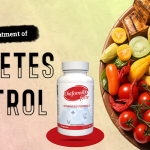What Are Hemorrhoids?
The vascular structures called hemorrhoids swell up where the rectum meets the anus. When pressure buildup causes stretching and inflammation, the veins in this area develop into hemorrhoids. Hemorrhoids emerge frequently as a medical condition yet continue to produce inconvenient symptoms for many people. People can manage hemorrhoids better by learning about their origins, varieties and symptoms together with treatment options.
Types of Hemorrhoids
There are two main types of hemorrhoids:
- Internal Hemorrhoids
Internal hemorrhoids develop within the rectum but normally remain hidden from view. Internal hemorrhoids lack visible symptoms of pain while commonly resulting in blood leakage during bowel movements. At times hemorrhoids move through the opening of the anus which causes irritation and physical discomfort. - External Hemorrhoids
External hemorrhoids develop beneath the anal skin. External hemorrhoids tend to lead to symptoms of both itching and physical swelling while inducing pain responses. When a blood clot develops inside an external hemorrhoid it produces intense pain then medical professionals label this situation thrombosed hemorrhoid.
Causes and Risk Factors
The formation of hemorrhoids happens when pressure builds upon the rectal and anal veins. Common causes and risk factors include:
- Straining during bowel movements.
Chronic constipation or diarrhea.
Extended sitting duration becomes problematic for hemorrhoid development when people remain seated on a toilet seat.
During pregnancy pressure accumulates because the enlarging uterus compresses pelvic veins.
Obesity forces its way into lower rectal venous circulatory systems.
The tissues that provide support for veins become weaker with aging.
Eating foods low in fiber produces hard stools which require extra effort to pass.
Symptoms of Hemorrhoids
The symptoms vary depending on the type of hemorrhoid but may include:
Suffer people experience pain or sensation of discomfort near the anus area.
The area around the anus may develop enlarged bumps.
The anal region can feel itchy and produce discomfort.
Bright red blood in stool or on toilet paper.
Mucus discharge.
Treatment Options
Hemorrhoids can often be managed with simple lifestyle changes and home remedies, such as:
Dietary Changes: When people drink enough water together with consuming a diet rich in fiber their stool texture becomes softer and they must strain less often. Topical Treatments: OTC creams and suppositories along with ointments help reduce inflammation while soothing itching.
Warm Sitz Baths**: People should soak affected hemorrhoidal areas in warm water for 10-15 minutes to experience symptom relief.
Medications: Symptoms are reduced by medications such as pain relievers in combination with stool softeners.
Rubber band ligation, sclerotherapy or surgical removal becomes necessary for treating particularly bad cases.
Prevention
Prevent hemorrhoids by eating fiber-rich foods and keeping hydrated along with regular exercise and limiting both seated time and bowel strain. Quick recognition of symptoms helps reduce pain while also stopping more severe health outcomes.
Hemorrhoids: Why Is That?
Millions around the globe suffer from hemorrhoids which remains an unpleasant topic to many people. Enlarged blood vessels situated in both the rectal and anal areas generate symptoms such as discomfort plus itching along with pain and bleeding. What causes hemorrhoidal conditions to develop? Effectively preventing and managing hemorrhoids depends on our understanding of both their underlying causes and contributory circumstances.
What Are Hemorrhoids?
Hemorrhoids, also known as piles, are classified into two types: internal and external. Although they develop inside the rectum where they form painlessly internal hemorrhoids have the potential to cause bleeding. External hemorrhoids which develop under the skin at the anus often bring more pain because nerve endings are plentiful there. Thrombosed hemorrhoids develop into painful clots which lead to major increases in discomfort.
Why Do Hemorrhoids Develop?
The veins in the lower rectum swell when there is increased pressure within this area which leads to hemorrhoids. Several factors contribute to this pressure:
- Straining During Bowel Movements
The regular bowel dysfunction of either chronic constipation or diarrhea requires painful straining which impacts rectal veins. Excessive straining from chronic gastrointestinal conditions stands as a leading factor for hemorrhoid development. - Pregnancy
Hormonal changes and expanded abdominal space during pregnancy put women at high risk for developing hemorrhoids. Vein compression happens as the uterus grows during pregnancy.?<!filename_JD5_DOCUMENT_replace_for_second.dnd?The enlarging uterus applies pressure to the veins which results in hemorrhoid conditions. - Prolonged Sitting or Standing
Prolonged periods of inactive sitting or standing block vein circulation and elevate blood pressure within veins. - Obesity
Excess body weight creates extra pressure on the pelvic and rectal veins which usually results in higher chances of hemorrhoid conditions. - Low-Fiber Diet
People who consume diets missing sufficient fiber regularly experience constipation while their bowel movements require them to strain excessively. Fiber adds an extra layer of moisture to the bowel waste making elimination easier. - Age and Genetics
The tissue integrity that maintains rectal veins deteriorates as people get older which results in increased vulnerability to vein swelling. Hemorrhoid vulnerability might be influenced by genetic factors.
Preventing Hemorrhoids
A combination of lifestyle alterations target the factors which lead to hemorrhoids and helps prevent their occurrence. A diet rich in fiber with multiple servings of fruits, vegetables and whole grains encourages healthy digestion and stops constipation. Maintaining body hydration levels together with routine physical activity enhances bowel function as well. The prevention of hemorrhoids demands equal attention to both minimizing prolonged sitting while implementing regular standing breaks and practicing good bathroom routines which include avoiding extended toilet seating and straining.
Conclusion
Although most people find hemorrhoids to be an embarrassing subject they remain common issues that will often prevent or manage when people make appropriate lifestyle changes. When people learn about hemorrhoid causes they gain knowledge that helps them take direct action to protect their digestive well-being.
Hemorrhoids: How to Avoid Them
The rectal or anal area contains swollen blood vessels which we call hemorrhoids. The condition induces uncomfortable sensations which can turn into painful experiences while resulting in itchy skin and bleeding when passing stool. The human body creates hemorrhoids as a common medical development yet these issues remain easily preventable. Knowledge about causative factors together with early prevention strategies greatly decreases the risk for new hemorrhoid formation.
Causes of Hemorrhoids
The primary cause of hemorrhoids is excessive pressure on the rectal veins, which can result from:
Straining during bowel movements: Blockage of stool during constipation or the rushed intestinal movements of diarrhea tend to create periods of pressure on rectal veins. Prolonged sitting or standing: Higher pressure on the lower rectal area develops when this condition exists.
Pregnancy: During pregnancy a combination of increased baby weight and hormonal alterations increases the risk of hemorrhoids.
Obesity: The heavier body puts extra pressure on the veins within the rectum.
A low-fiber diet**: When you consume a diet low in fiber your stools become hard that makes it difficult for your body to expel them.
Preventing Hemorrhoids
- Eat a High-Fiber Diet
A diet containing sufficient fiber works to produce smooth stools while maintaining steady bowel movements. Eat a variety of fruits, vegetables alongside whole grains and legumes and nuts throughout your meals. Eating these selected foods maintains digestive health by decreasing instances of bowel strain. - Stay Hydrated
Drinking sufficient water helps make stools softer while also making them simpler to move through the body. You should drink between 8 and 10 water glasses each day but increase this amount when being active or living in warm environments. - Exercise Regularly
nổi Помеские ativities increase bowel movement performance while significantly reducing case о întőpatör. People who maintain moderate physical activity through walking, swimming and practicing yoga can better manage digestive health and avoid unnecessary weight gain that causes hemorrhoids. - Avoid Prolonged Sitting or Standing
Normal exercise breaks should become part of your schedule when your job requires long seating periods. Shifting your position every 60 minutes enables reduced pressure on your rectal area. - Use the Bathroom When Needed
When you refuse to use the restroom your stool becomes harder which increases the risk of straining during bowel movements. Address all signals from your body without any delay. - Practice Good Bathroom Habits
You should limit the amount of time you spend straining yourself on the toilet”, this may lead to further problems. Vein pressure rises as you strain your body while continuous sitting throughout the day is a common risk factor for this condition. - Maintain a healthy weight
When you lose extra body weight your pelvic and rectal veins experience less pressure therefore hemorrhoids become less likely. - Avoid Heavy Lifting
When necessary lifting tasks must be performed take care to use proper lifting techniques. Using an exhale during lifting movements helps decrease lower-body pressure accumulation.
Conclusion
Your risk for developing hemorrhoids becomes lower when you make your diet fiber-rich and stay hydrated while exercising often along with establishing good bathroom habits. Prevention plays an essential role to maintain both simplicity and decrease your requirement for medical assistance.
Hemorrhoids: What is the Doctor’s Advice?
Swollen veins called hemorrhoids or piles exist in the lower rectum and anus area. Hemorrhoids bring discomfort and itching as well as pain while bleeding regularly during bowel movements. The population-wide prevalence of hemorrhoids causes many people to seek guidance about effective management approaches. Medical experts have developed standard advise for preventing hemorrhoids alongside their treatment strategies and long-term management techniques.
1. Lifestyle Changes
Medically trained professionals recommend life style adjustments both for hemorrhoid prevention and to control current conditions. Straining during bowel movements occurs because constipation functions as the key underlying cause of hemorrhoids. To reduce this risk:
Increase fiber intake:Aspart of controlling hemorrhoids patients should increase their intake of high-fiber foods including fruits and vegetables and whole grains and legumes because these foods make stool less difficult to pass. Healthcare providers advise patients to eat 20–30 grams of dietary fiber per day.
Stay hydrated:Every day consumption of 8–10 glasses of water helps achieve regular and smooth bowel movements.
Avoid prolonged sitting:Prolonged toilet sitting along with sitting times can intensify pressure on the anal veins. Use standing or moving moments if you need to work seated for extensive periods.
2. Hygiene and Local Care
Keeping the body cleaned up and sanitary serves as an essential need when you have hemorrhoids.
- **Keep the area clean:After bowel movements the anal region can be washed gently with warm water. The use of tough toilet paper together with scented wipes creates additional irritation for the affected area.
Warm sitz baths:Relief from warmth poured over sitting for short periods of 10 to 15 minutes in shallow water several times daily will help heal the irritable area while reducing tender swelling.
3. Over-the-Counter Treatments
For mild to moderate hemorrhoids, doctors often suggest using over-the-counter remedies:
Topical creams and ointments:Two product types with hydrocortisone or witch hazel work to decrease symptoms of pain and irritation.
Pain relievers:The combination of oral medications including acetaminophen or ibuprofen provides effective relief from pain.
4. When to Seek Medical Treatment
Patients should contact their physician when over-the-counter remedies fail to work or when symptoms show any indication of deterioration. Treatments may include:
Minimally invasive procedures:Rush band ligation along with sclerotherapy and infrared coagulation serve as common minimally invasive procedures for the reduction of hemorrhoids.
Surgical options:The treatment of severe hemorrhoids normally requires medical procedures such as hemorrhoidectomy or stapled hemorrhoidopexy.
5. Prevention Tips
Doctors emphasize the importance of preventing hemorrhoids from recurring:
Avoid heavy lifting:Excessive straining from lifting activities creates extra abdominal pressure which raises your risk of developing hemorrhoids.
Exercise regularly:The regular movement-related activities help your digestive system remain healthy while suppressing constipation-related issues.
Awareness of hemorrhoids depends on eating habits and proper cleanliness maintenance as well as off-the-shelf medications for treatment success. If hemorrhoid problems persist or become severe people should seek medical evaluation by a qualified healthcare professional. Proactive prevention together with early detection of problems helps control discomfort while enhancing life quality.

Hemorrhoids: How Long Has This Been Going On?
Swelling veins in the rectum or anus create conditions known as hemorrhoids or piles which result in pain-related symptoms including itching and bleeding. Millions of people worldwide have this common medical condition known as hemorrhoids. Proper management and treatment of hemorrhoids requires knowledge of both their duration since onset and their underlying development factors for all patients who experience them during their lives.
Types of Hemorrhoids
Hemorrhoids are classified into two main types: internal and external. The internal location of hemorrhoids places them inside the rectum so they generate no pain yet typically bleed. External hemorrhoids which exist beneath skin around the anus become troublesome by developing thrombosis which means they contain blood clots.
Duration and Symptoms
The time period for which hemorrhoids affect people largely differs based on individual circumstances and hemorrhoid severity levels. When care measures are followed properly along with mild hemorrhoid conditions people might recover within just a few days. Proper treatment strategies incorporate both increasing dietary fiber consumption and water intake and position changes against sitting still along with recommended over-the-counter repair agents including creams and suppositories.
The duration of hemorrhoid flare-ups grows lengthy when patients delay treatment because lifestyle choices or untreated conditions can extend the healing process beyond several weeks. Internal hemorrhoids show acute swelling together with pain but external thrombosed hemorrhoids may last for brief periods because the body returns to natural state after dissolving blood clots.
Chronic or Recurrent Hemorrhoids
Several patients develop ongoing hemorrhoid conditions which cause periodic symptoms to reappear. Hemorrhoid development occurs primarily through maintaining persistent risk elements like obesity in combination with minimal fiber intake and excessive sitting time as well as conditions during pregnancy. Advanced medical treatments such as rubber band ligation together with sclerotherapy and surgery should be considered when hemorrhoids keep recurring.
When to See a Doctor
Home treatments work for many types of hemorrhoids but patients need to consult a doctor when their symptoms remain or aggravate beyond seven days. Rectal bleeding warrants immediate medical attention since its severe or changed bowel habit condition together presents a risk of colorectal cancer. Signs indicating an urgent need to see the doctor include being unable to put a prolapsed hemorrhoid back in the rectum along with severe pain plus significant swelling of the external rectum.
Preventing Future Hemorrhoids
You can stop hemorrhoids from coming back by eating a fiber-rich diet with fruits vegetables and whole grains as well as staying hydrated through regular water drinking and maintaining exercise routines. Take scheduled pauses from sitting when necessary and never stress yourself when using the bathroom.
When you understand a hemorrhoid’s duration of existence alongside its origin factors you can develop active methods to overcome symptoms and minimize future occurrences.
Hemorrhoids: What Is the Way to Survive?
Hemorrhoids represent veins in the bottom part of the rectum and anus that swell up and create uncomfortable sensations along with itching sensations and often lead to bleeding. Around 75% of people develop hemorrhoids during their lifetime. Efficient management and survival from this condition demands knowledge about both its origins and methods of treatment along with its presentation.
Causes and Risk Factors
The pressure that results in rectal or anal vein swelling creates hemorrhoids. Common causes include:
- **Chronic Constipation or Straining:When someone exerts themselves during bowel movements they create high pressure on their rectal veins.
- **Pregnancy:Pregnancy relates to a higher pelvic pressure which commonly results in hemorrhoid development.
- **Prolonged Sitting:Extended time spent seated especially during toilet use will likely worsen the medical issue.
- **Aging:Aging causes rectal vein tissues to degrade which results in higher susceptibility to disorders among older adults.
- **Obesity:Gaining excess body weight causes increased pressure on pelvic veins.
Symptoms to Watch For
Hemorrhoids are classified into internal and external types:
Internal Hemorrhoids: Internal Hemorrhoids which reside inside the rectum remain unseen yet cause blood loss without pain while passing stool. External Hemorrhoids: External hemorrhoids develop under the skin near the anus where they create painful lumps.
Common symptoms include:
Bright red blood on toilet paper or in the toilet bowl.
You will often experience skin discomfort or scratchy sensations surrounding the anus area.
Sitting causes peculiar pain and distress.
The appearance of swelling together with lumps at the anus region.
Immediate Relief and Survival Tips
Effective hemorrhoid management requires patients to use a blend of household treatments alongside lifestyle adjustments as well as medical therapy.
Home Remedies
- **Warm Sitz Baths:A 15-20 minute examination of the affected region with warm water lessens swelling alongside reduced pain.|
- **Cold compresses:The use of ice packs reduces inflammation while delivering short lasting ease.
- **Topical Treatments:The skin inflammation that comes with hemorrhoids can be eased by applying hydrocortisone or witch hazel-based ointments available without prescription.
- **Fiber-Rich Diet:Eating foods rich in fiber from fruits, vegetables and whole grains makes stool easier to pass which lessens bowel movement difficulty.
- **Hydration:Your body needs hydration to stop constipation from developing and to ensure consistent bowel movements.
Lifestyle Changes
Avoid Straining:During bowel movements use gradual movements instead of hard pushing to complete the process.
Exercise Regularly:Engaging in moderate exercise produces enhancements to your bowel function.
Use Proper Posture:During bowel movements taking a squatting posture helps to facilitate easier elimination.
Limit Toilet Time:Excessive sitting on the toilet leads to increased pressure in the rectal veins.
When to Seek Medical Help
Non-severe hemorrhoids are treatable at home but serious conditions need medical attention. Consult a doctor if you experience:
Excessive bleeding.
severe pain or swelling.
persistent symptoms despite home remedies.
A lump that does not recede.
Medical Treatments
- **Rubber Band Ligation:Doctors place a rubber band at hemorrhoids’ base which cuts blood flow and makes tissue shrink.
- **Sclerotherapy:Medical professionals inject a solution into hemorrhoids to cause the tissue to retract.
- **Infrared Coagulation:Irradiating heat triggers the shrinkage of internal hemorrhoids.
- Hemorrhoidectomy: Surgical removal of large or persistent hemorrhoids.
- **Stapled hemorrhoidopexy:This procedure both moves hemorrhoids and decreases their blood circulation.
Prevention
Preventing hemorrhoids represents the most effective survival method for treatment. Take the easy preventive steps to lessen your odds by eating well balanced meals mixed with enough fluids along with practicing healthy bowel routines. Although hemorrhoids lead to discomfort proper treatment and lifestyle modifications allow effective management.




